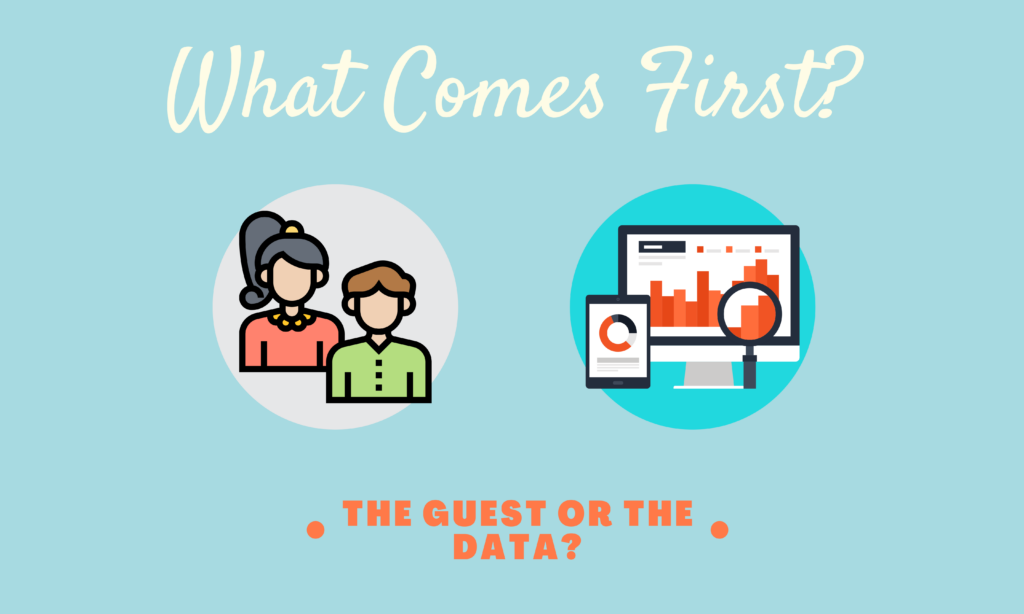Regardless of its industry, value proposition, or size, every business needs quality data about its target market to make the best decisions possible. When it comes to the business of location-based entertainment destinations, each of your guests has a unique experience at your venue to tell. After all, people who stay at your resort or play at your water park get a first-hand look at your business. It’s up to you to mine that data and turn it into something meaningful. The million-dollar question is how?
There are plenty of products and services available to help, but there is more to it than that. We live in an age where data is precious, and people don’t always feel comfortable giving up information. That’s where a solution from Vantage comes into play. It’s more than data acquisition. It’s about helping people connect to your venue in ways that feel personal to them. As you provide opportunities and outlets for your guests to get closer to your venue and feel like there are new ways of connecting, they become more open to sharing their guest journey with you.
The Importance of Guest Data
Before we get too far into this, let’s point out the holy grail of guest journey data as we see it. Combining real-time guest journey data with customer sentiment and layering on specific demographic understanding allows you to get a clear picture of each guest’s experience. Rolling this data up into demographic “bundles” allows you to target your best customers based on their real-life experiences in your park as they happened. While a survey helps you to understand how a guest rates a specific experience after it has happened, real-time data provides you with a much richer data set to create meaning for your organization. As an example, imagine a guest rates their overall satisfaction at the park low, but individual attractions high. What happened? That can be tough to tell from a survey. But, when you layer in an understanding of what happened in real-time you can quickly see where the guest spent the majority of their time. How many trips to the locker did they take? Did they have to criss-cross the park in order to take advantage of specific experiences? Combining this information gives you a much clearer picture of what works at the park and what doesn’t for specific demographics of guests.
The Challenges of Data Collection
Acquiring real-time guest journey data can be challenging. There are technological hurdles to overcome. There are data preparation challenges to manage. Meanwhile, people want to feel that their personal data is being cared for with the utmost respect. Expecting that guests will be willing to hand this information over without any questions asked could send you down the wrong path.
As an example, when we were building some of the core functionality of Vantage, we ran a series of tests at a large resort water park. We put together some prototype wristbands that were translucent and obviously had some sort of electronics inside of them. We handed these bands out to guests as they entered the park. We specifically didn’t tell them anything related to the system. Just that these were essentially your tickets into the park. We received varied questions from, “Are you tracking me?” to “I don’t want to ruin my tan by wearing this” to “What can I do with this?”
We wanted to see how guests responded to the bands. We expected a lot of questions and a few complaints and, that’s pretty much what we received. The following week we came back to the park with the same wristbands, but we added some speakers to the top of each slide. We also added a kiosk with an iPad built into it and loaded up an app that we created that allowed a person to tap their wristband on an RFID reader and choose from a selection of songs—choosing that song would allow it to play when the guest got into the slide.
This time, as we handed out wristbands to guests, we proactively told them that this was their ticket into the park and that it added to the experience by playing their favorite music as long as they visited the kiosk. Keep in mind, that this was a week later with a whole new set of guests that weren’t there for the first test. To our surprise, there wasn’t a single complaint. No one questioned the idea of tracking or data collecting. Whether consciously or unconsciously, the trade-off of gaining some guest experience to letting go of some data made it worthwhile to 100% of those guests.
We randomly polled some guests on our observation, and everyone relayed the same information back to us. Essentially, having a novel experience that they couldn’t get anywhere else made this exciting. The prospect of giving up some personal data (as seemingly trivial as location data) was worth it to gain a personalized experience at the attractions.
The experience we observed and interacted with at that resort helped shape the way we think of data collection. Guests and data collection are inextricably linked. And the guest experience needs to be at the center of your thought process.
How Vantage Can Help
Sounds easy. Give guests an experience that is unique and personalized and then the data is there for you, right? It’s not that easy, sadly. Your park needs to have the infrastructure to support these data points. Your team needs to have expertise in interpreting the data. This is where an organization like Vantage can help. While working with you to develop a plan that tracks your objectives and KPIs, Vantage designs data collection points to maximize efficiency for your team while delivering a digital overlay to your physical park. This link between the physical and digital world opens up the ability to continue to offer new experiences and more data.

